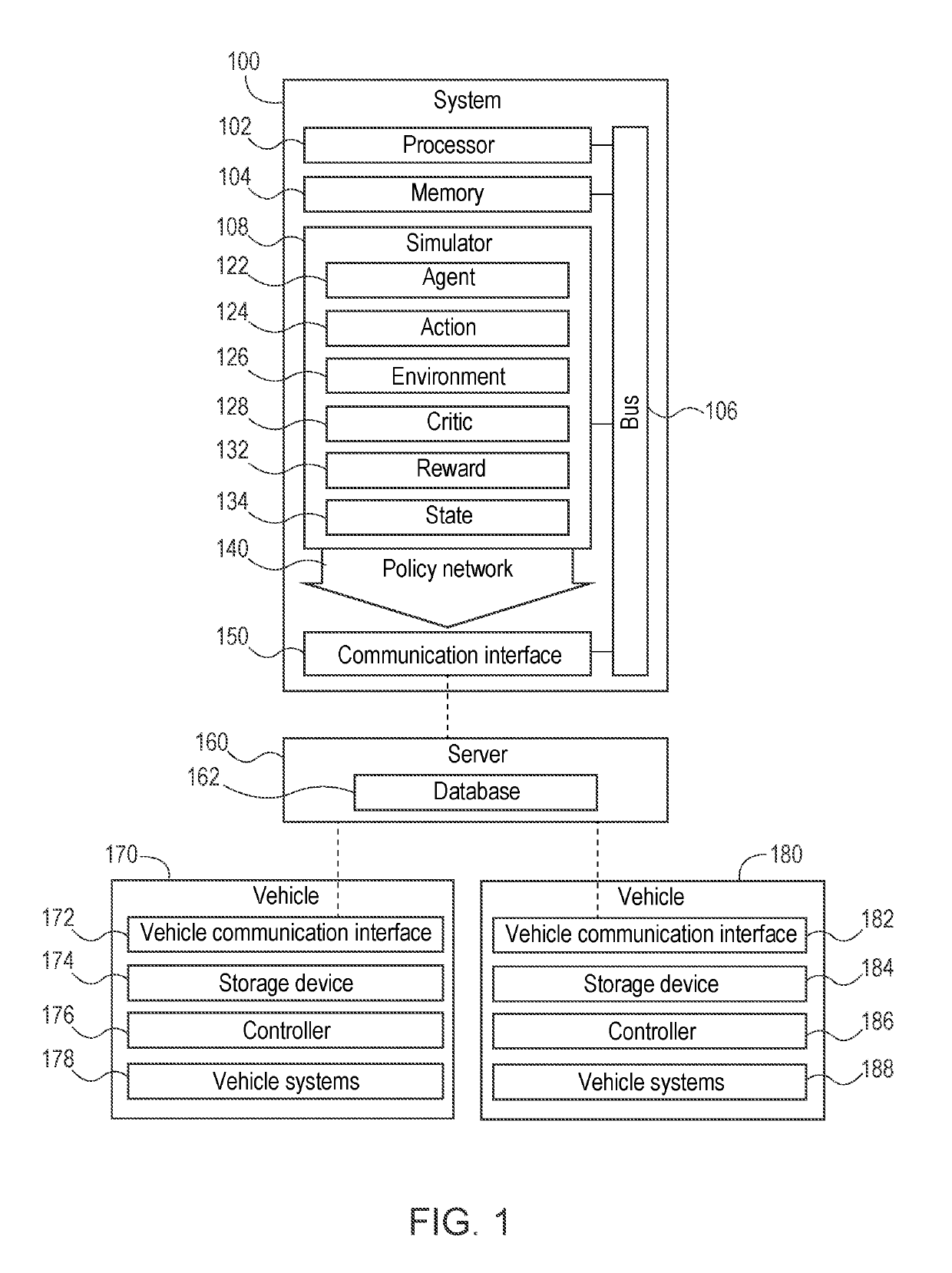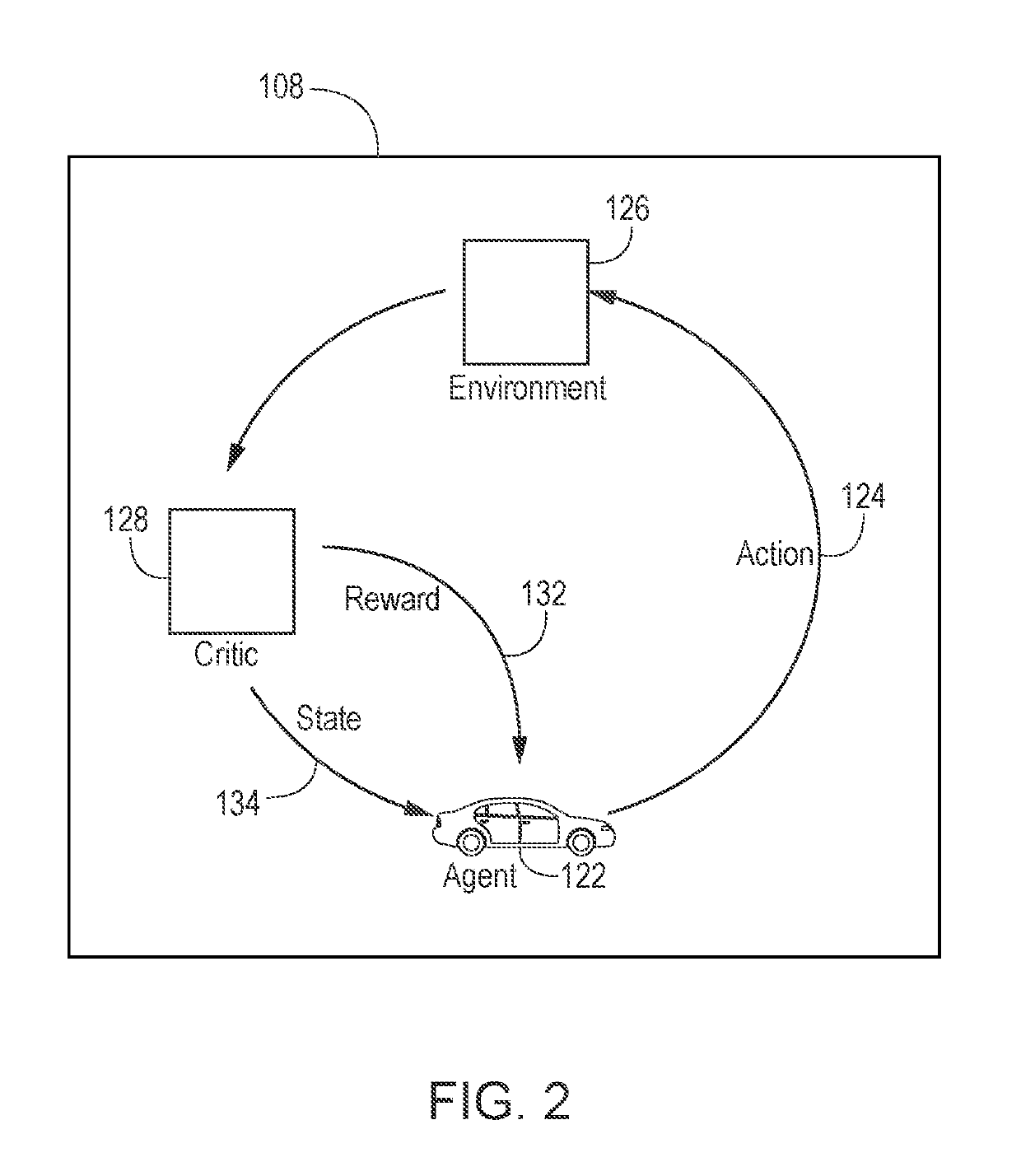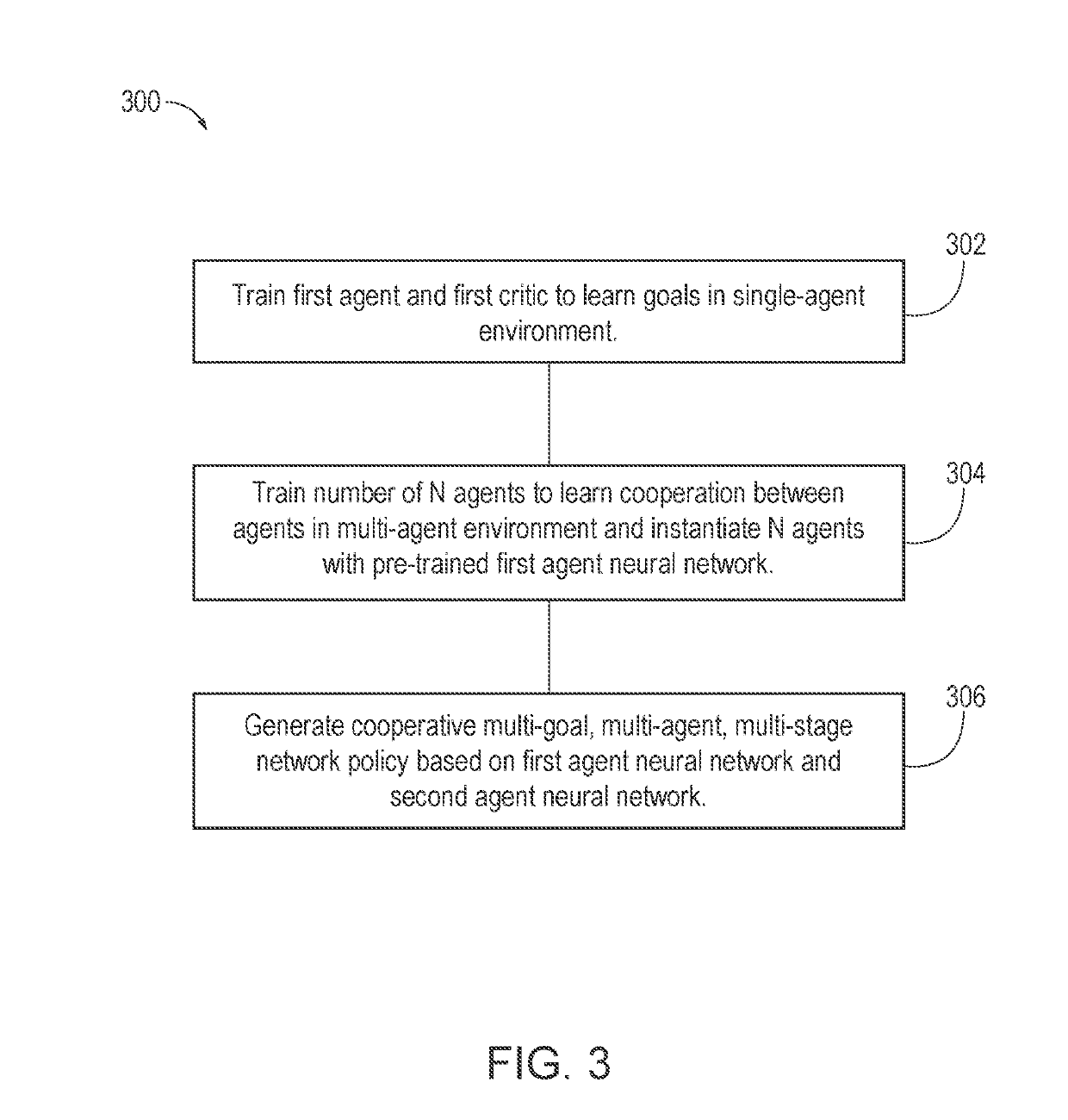Interaction-aware decision making
a decision-making and interaction-aware technology, applied in the field of interaction-aware decision-making, can solve the problems of ineffective exploration actions in cooperative behavior, high inefficiency of cooperative behavior concurrently, and difficulty in efficient exploration in reinforcement learning in a multi-agent setting
- Summary
- Abstract
- Description
- Claims
- Application Information
AI Technical Summary
Benefits of technology
Problems solved by technology
Method used
Image
Examples
Embodiment Construction
[0034]The following includes definitions of selected terms employed herein. The definitions include various examples and / or forms of components that fall within the scope of a term and that may be used for implementation. The examples are not intended to be limiting. Further, one having ordinary skill in the art will appreciate that the components discussed herein, may be combined, omitted, or organized with other components or organized into different architectures.
[0035]A “processor”, as used herein, processes signals and performs general computing and arithmetic functions. Signals processed by the processor may include digital signals, data signals, computer instructions, processor instructions, messages, a bit, a bit stream, or other means that may be received, transmitted, and / or detected. Generally, the processor may be a variety of various processors including multiple single and multicore processors and co-processors and other multiple single and multicore processor and co-p...
PUM
 Login to View More
Login to View More Abstract
Description
Claims
Application Information
 Login to View More
Login to View More - R&D
- Intellectual Property
- Life Sciences
- Materials
- Tech Scout
- Unparalleled Data Quality
- Higher Quality Content
- 60% Fewer Hallucinations
Browse by: Latest US Patents, China's latest patents, Technical Efficacy Thesaurus, Application Domain, Technology Topic, Popular Technical Reports.
© 2025 PatSnap. All rights reserved.Legal|Privacy policy|Modern Slavery Act Transparency Statement|Sitemap|About US| Contact US: help@patsnap.com



